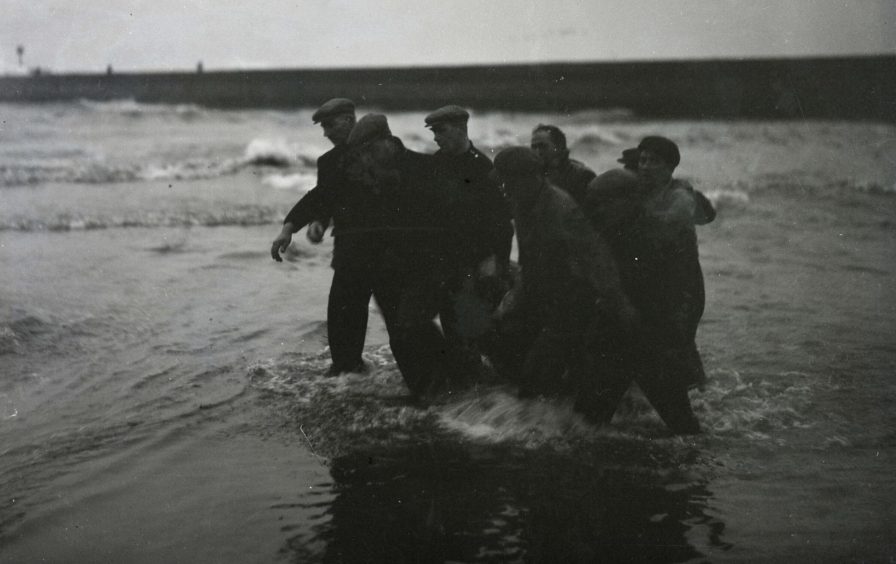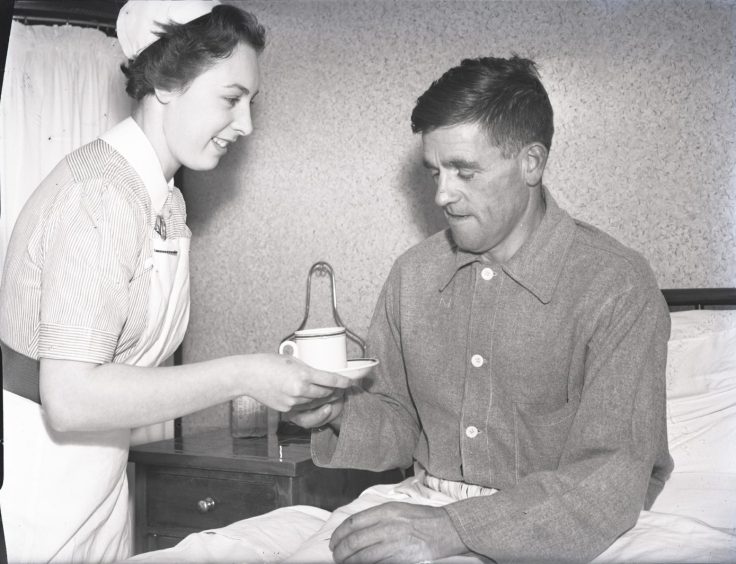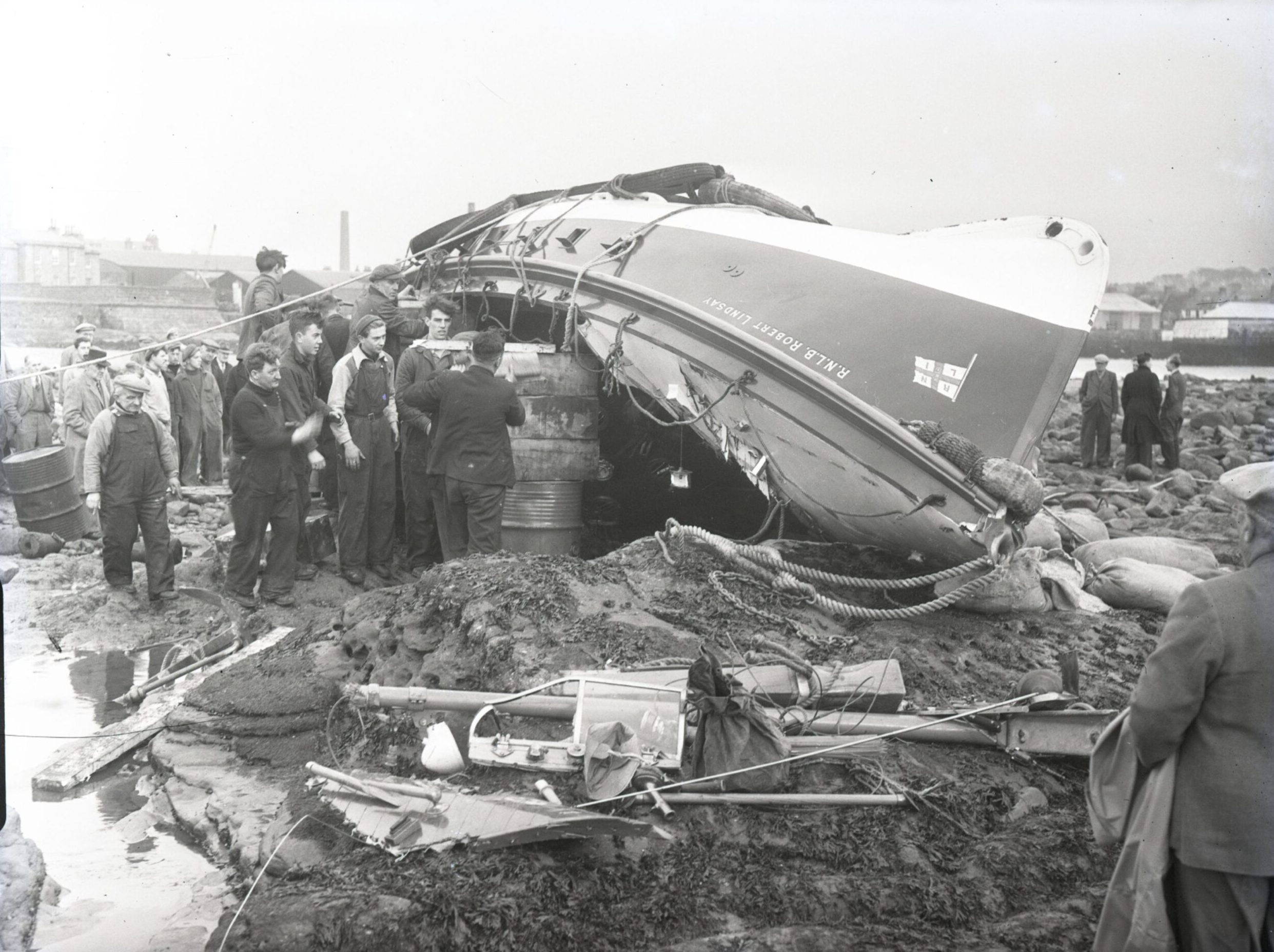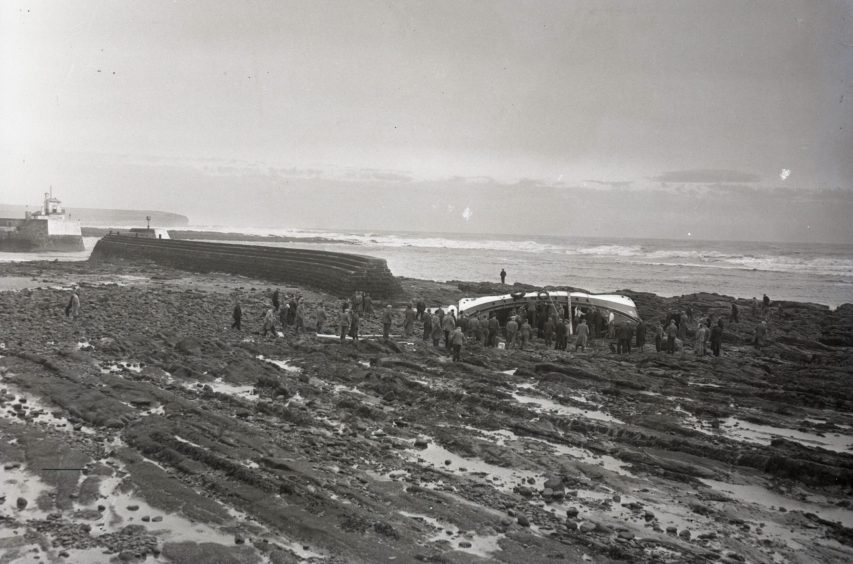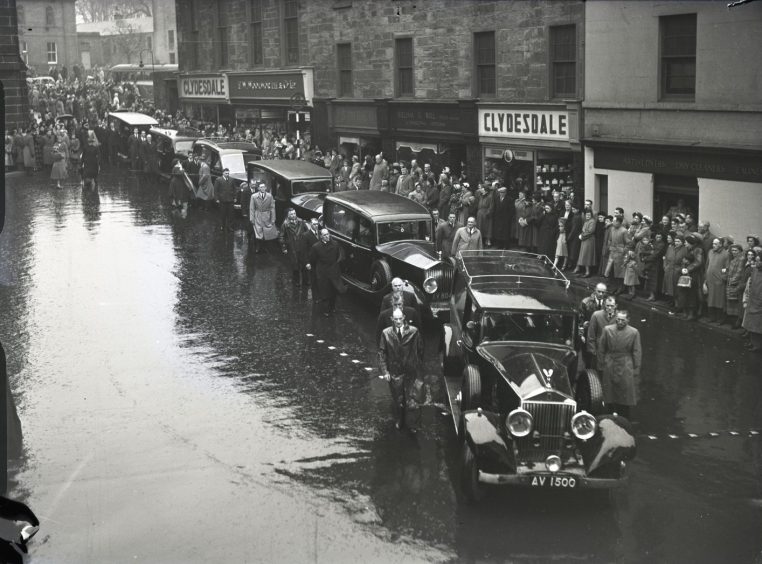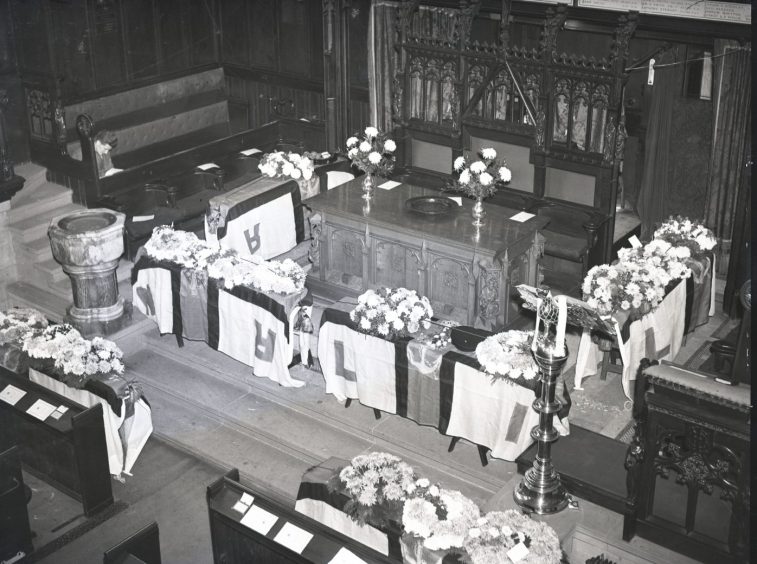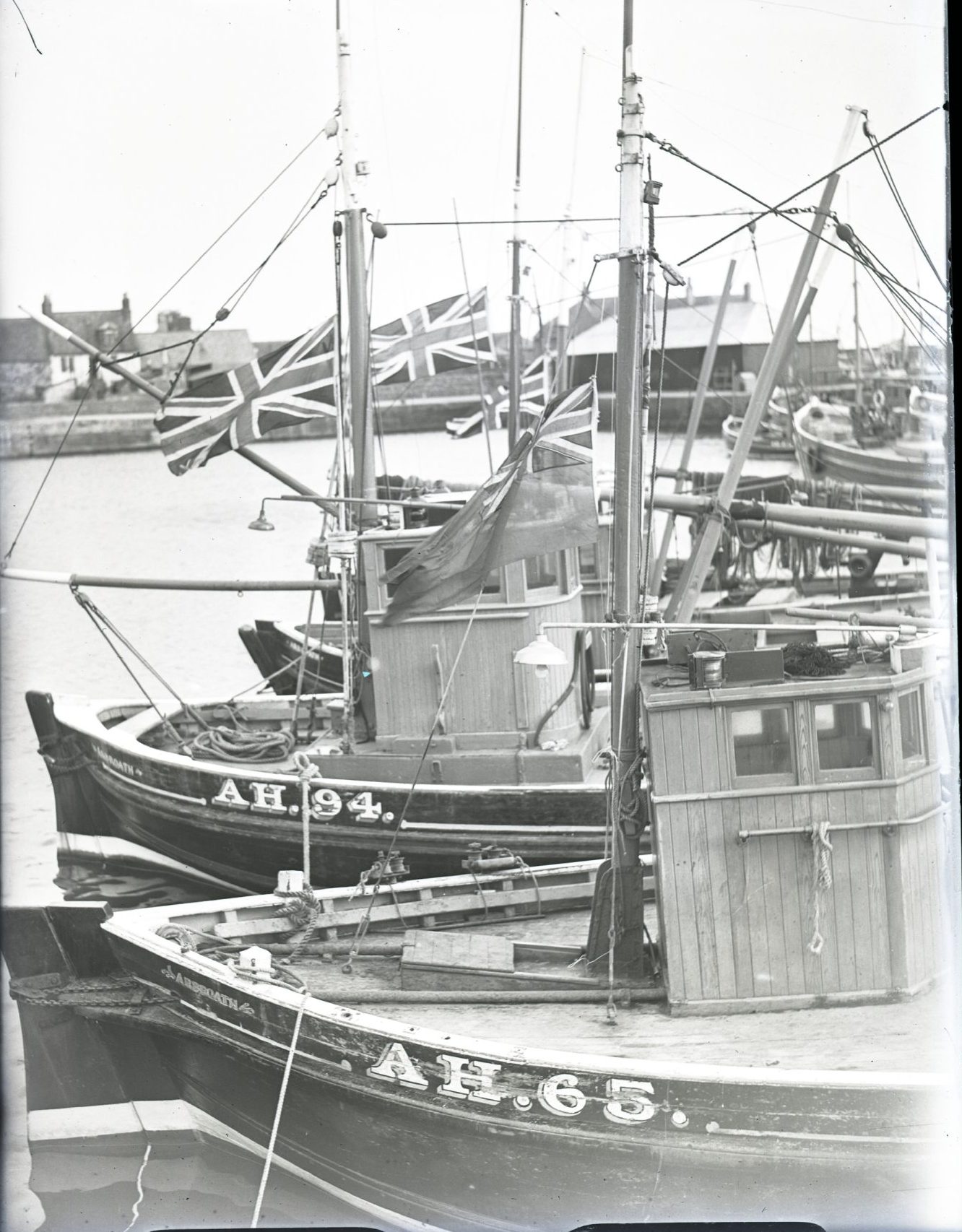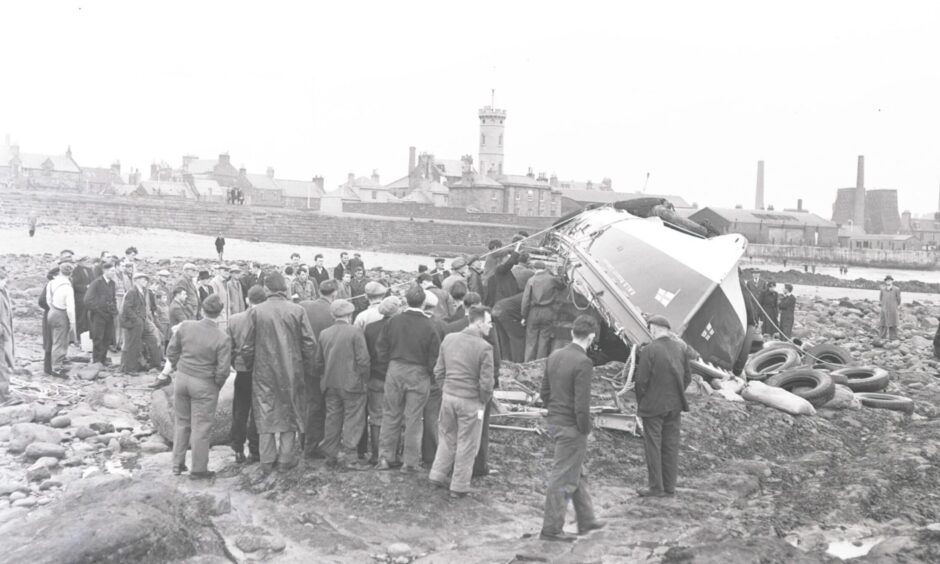
The shocked townspeople of Arbroath awoke 70 years ago to find the town’s lifeboat upside down on the rocks in the grey morning light.
After taking part in an unsuccessful search in heavy seas, the lifeboat had headed back to port.
But it capsized after being hit by Arbroath’s old enemy, the south-east gale which can create huge seas on the bar at the harbour’s entrance.
Six of the crew were drowned. Only one man survived.
The story of the Arbroath lifeboat disaster is one of courage, sacrifice and loss.
It was October 27 1953, and the lifeboat Robert Lindsay had spent a violently stormy night fruitlessly searching for the Dundee-owned sand boat Islandmagee.
It seemed a case of being in the wrong place at the wrong time.
Fateful mission to help the Islandmagee
Earlier, the Islandmagee had loaded 200 tons of wet sand on the Birkhill Bank and passed Dundee bound for Leith around 5pm.
She had made at least 150 voyages between Dundee and Leith.
On board the ship – built in 1900 by Scott & Sons on the Clyde – was a crew of six.
A storm gale came up that quickly turned into a force 9 storm.
Passing the North Carr Light vessel, she was noted as making very heavy weather.
The Islandmagee was last seen off Crail at around 9.15pm.
Fife Ness coastguards then saw some red distress flares about three miles out to sea.
The Anstruther lifeboat was launched first at 10.43pm.
It was decided to launch the Arbroath lifeboat at 12.50am to help in the search, as it seemed likely that the prevailing weather conditions might drive the ship northwards.
Both lifeboats carried out a thorough and extensive search of the whole area, but could find no trace of the Islandmagee.
The lifeboats returned to their respective harbours.
The Anstruther lifeboat arrived back at 5.45am on the 27th.
A number of people on the harbour pier saw the Robert Lindsay approaching the gap between the breakwater and the harbour wall before the lights disappeared.
It was 5.47am.
A huge and very steep wave struck the boat close to the harbour.
It delivered a fatal blow.
She capsized instantly.
Cries for help were heard and the coastguard fired rocket lines at random.
One of them fell across the second coxswain.
Archibald Smith grabbed it and was hauled ashore.
The man who saved his life, Mr Charles Smith, No 1 in the rocket brigade, said: “It was the worst southerly gale in 30 years.
“We could not get down to the edge of the water with the gear.
“We heard calls for help in the darkness.
“I fired a line in the direction of the shouts.
“It was a million to one shot which came off.
“‘As soon as the line was in the water I heard a shout: ‘Pull in, lads, and hurry up’.
“We pulled the man through the harbour entrance and on to the quay.
“It was Archie Smith.”
Who were the victims aboard the Robert Lindsay?
The other six members of the crew all lost their lives.
Coxswain David Bruce, whose body was discovered lashed to the wheel, had served on Arbroath lifeboats for 30 years.
He was 48 and had been coxswain since 1952.
He was survived by a wife and a married daughter.
Mechanic Harry Swankie was due to retire from the lifeboat after 32 years of service.
Swankie was the oldest member of the crew at 63.
He left a wife and four daughters.
His nephew, William Swankie, left a wife and two young daughters.
He was 30 and had been appointed assistant mechanic in 1953.
William Thomas Adams, 33, the owner of a small fishing boat, also left a wife and two young daughters.
He was appointed bowman also in 1953.
The Cargill brothers, Charles and David, crewed a fishing boat with their other brother.
They were 28 and 29.
Both were engaged to be married.
There was barely anyone in Arbroath whose life was not touched by what happened.
The survivor explained in Arbroath Infirmary: “I went under the boat and when I came up I gripped one of the ropes looped along the gunwale.
“I heard a man shouting in the water then someone yelled to me to climb up beside him on the upturned hull.
“I was frightened to let go my hold on the rope and the next big wave washed my mate off the hull.
“I did not know who it was.
“Then I lost my grip on the line.
“As I was floating away I felt something strike my body.
“I made a desperate grab for it.
“It was a rope and after what seemed an eternity I was hauled in.
“That is all I remember.”
It turned out the Islandmagee had sunk in the heavy seas with the loss of all her crew.
There was compelling evidence that at least some of the crew had made it into one of the lifeboats but it sank as well.
The wreck of the Islandmagee was not found until 1986.
Town stood still to honour dead of Arbroath lifeboat disaster
The funeral of the Arbroath men was held on October 31 in the old parish church.
Shops throughout Arbroath closed that afternoon.
As families wept, flags flew at half mast, police officers saluted and the six hearses containing heroes passed in procession, followed by proud ranks of marching fisherman.
More than 10,000 mourners lined Arbroath’s sad streets.
One minute’s silence was observed, and the hymns “O God our Help in Ages Past” and “Eternal Father Strong to Save” were sung.
The Robert Lindsay was replaced by the Howard D, a lifeboat from the reserve fleet.
A new crew was formed with Henry Smith as coxswain.
Less than a fortnight after the disaster, Archie Smith volunteered as a crew member for the replacement boat – a reflection of the courage of all RNLI crews.
On December 8 1953, a public inquiry into the Arbroath lifeboat disaster was conducted by the Procurator Fiscal at Dundee.
The jury returned a formal verdict of “accidental death by drowning with no blame or default attached to anyone”.
More than £35,000 was given to a local disaster fund and a commemorative bronze plaque was placed on the storm wall of the Fish Quay close to the light tower.
Nine years later, the plaque was transferred to the wall of the lifeboat house.
In October 1957 the parents of the Cargill brothers donated a bronze commemorative plaque in memory of the victims, which was unveiled at Arbroath Old Parish Church.
Reverend John Reid, interim moderator of the Old Church, said that October 27 1953, was one of the “saddest and proudest days in the history of Arbroath”.
It was a proud day because they were reminded in this materialistic world “that the great ideals that made the lifeboatmen’s action great had not altogether disappeared”.
The Earl of Airlie unveiled the plaque at the ceremony, which was attended
by relatives of the men who went out on a shout and never came home.
“They rose to the heights when called upon,” he said.
“It is what they stood for that we should cherish and always remember.”
The double tragedy of 1953 has never been forgotten.
